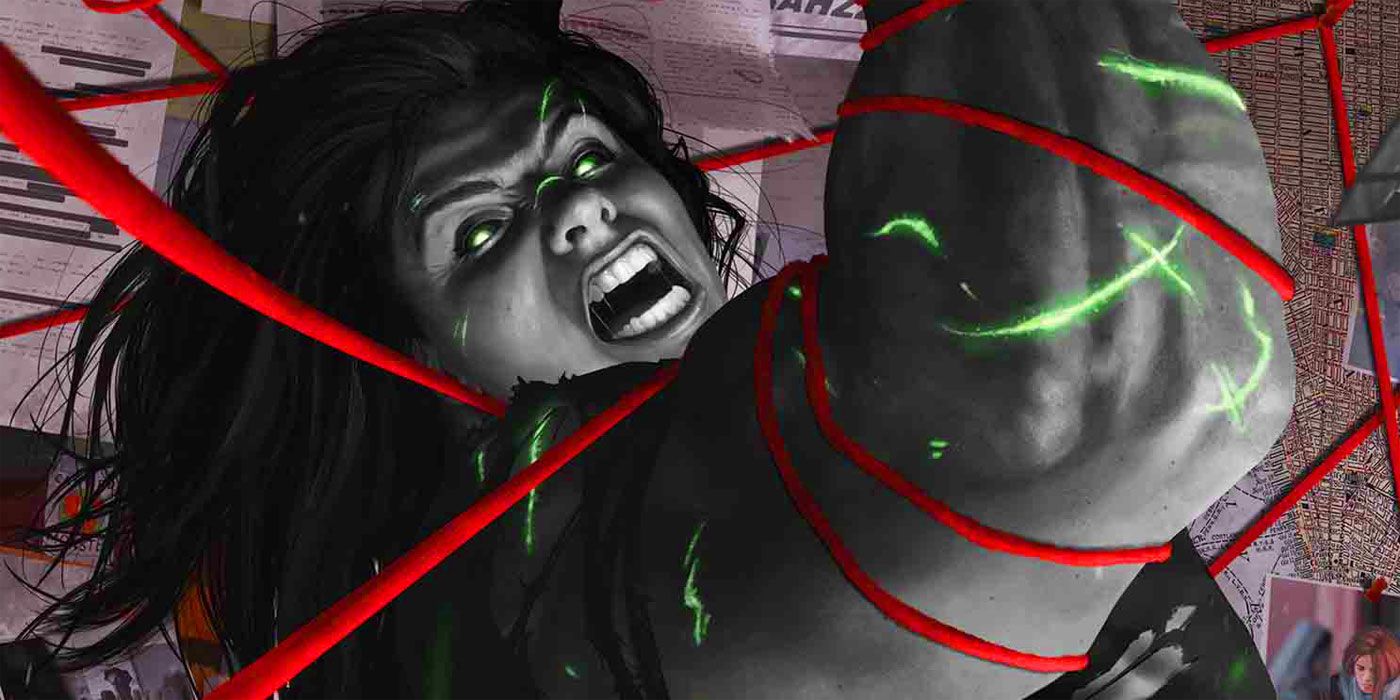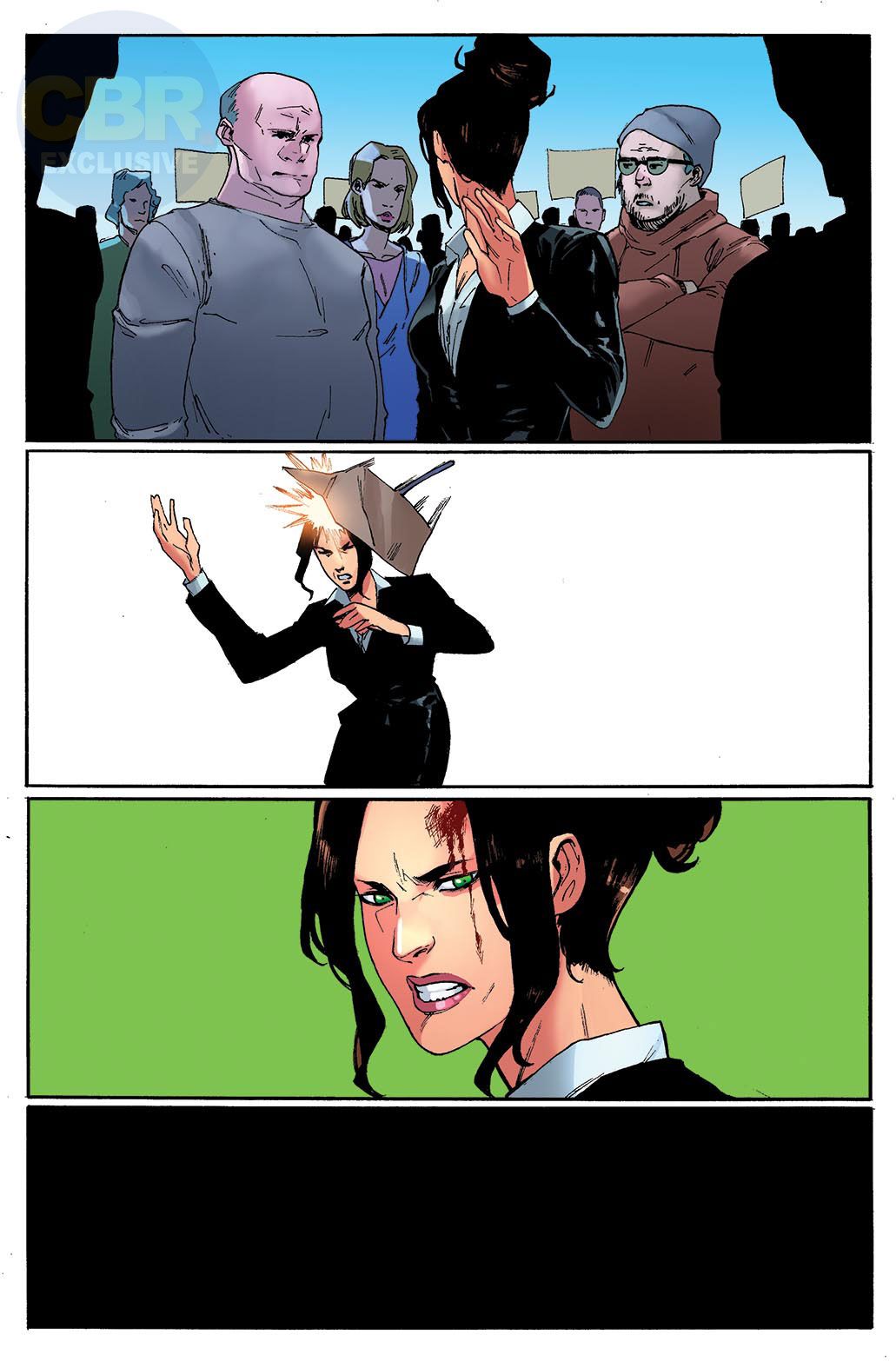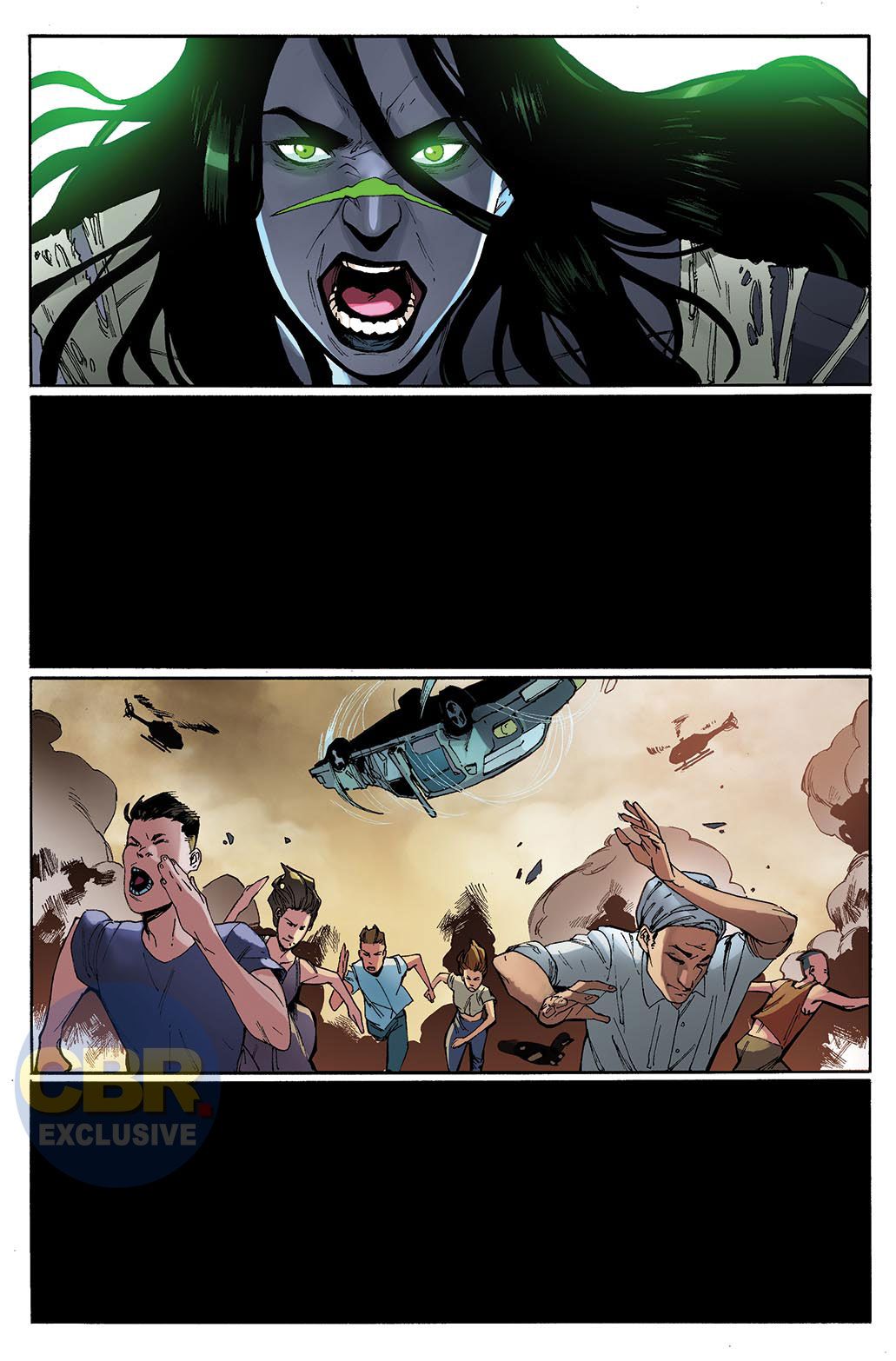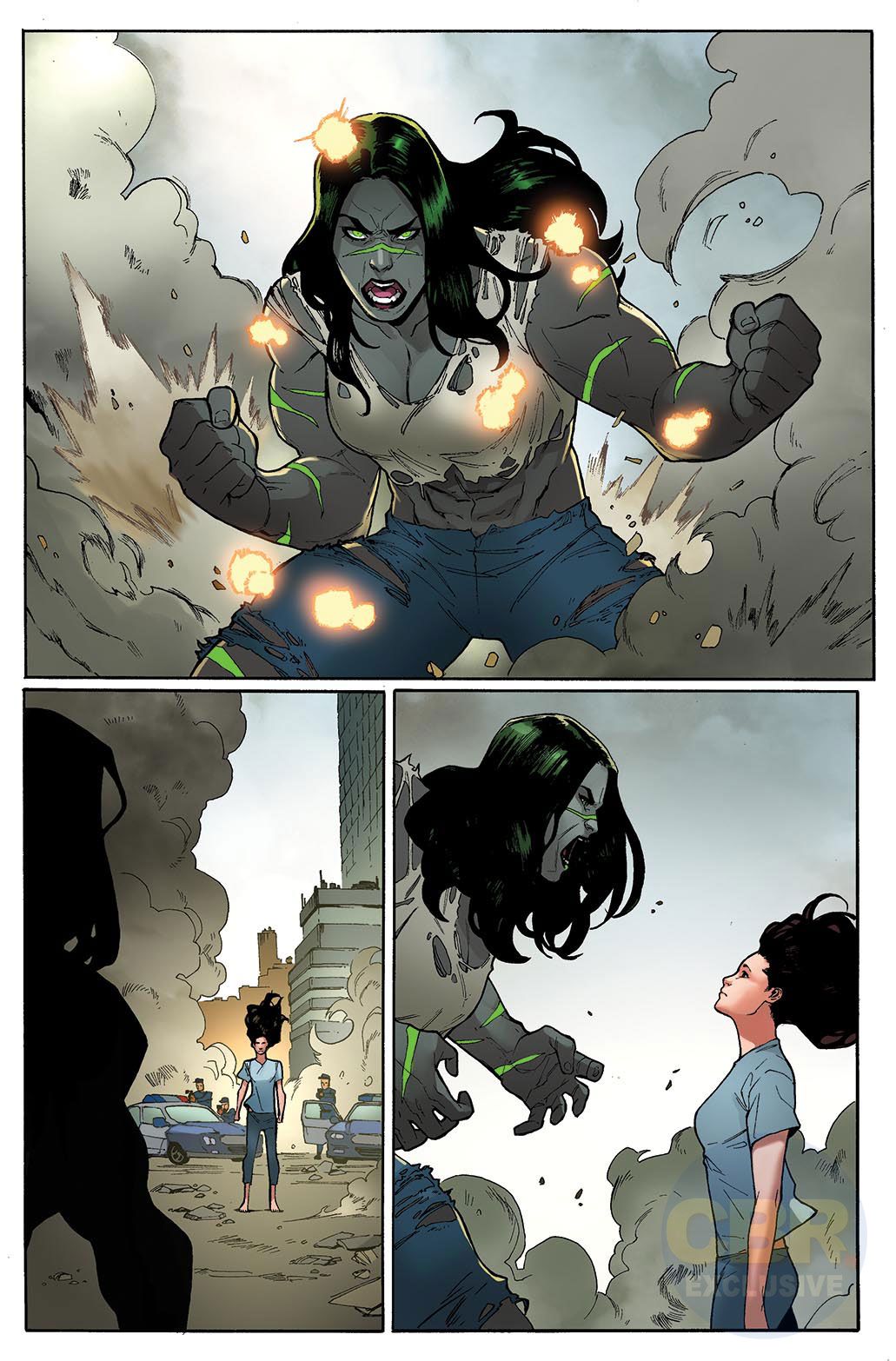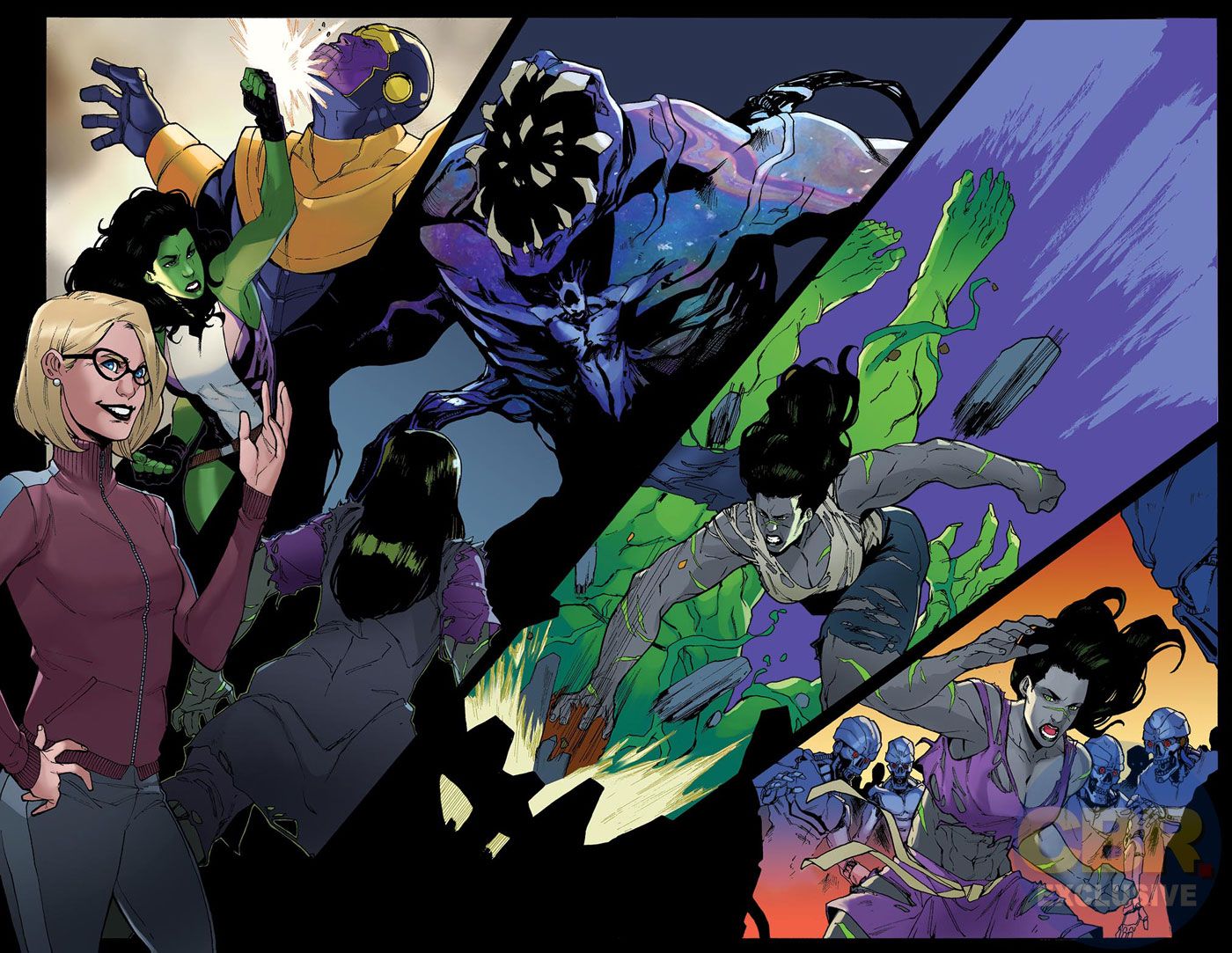Thanks to a blood transfusion from her cousin Bruce Banner (aka, the Incredible Hulk), lawyer turned superhero Jennifer Walters is also capable of transforming into a superhumanly strong alter ego that can shrug off massive amounts of physical punishment. But even though she has Gamma-enhanced, super-tough skin and muscles, she's not immune to the effects of anguish or depression. In Marvel Comics’ She-Hulk, writer Mariko Tamaki and her artistic collaborators are chronicling how their title character is coping with the dual traumas she suffered during last year’s Civil War II event, where she almost died in a battle with Thanos, and experienced the death of her cousin. So far, wrestling with the stress of what she endured and the foes that are crossing her path has been difficult, and it’s just become a whole lot more dangerous.
RELATED: Angie Harmon Celebrates Halloween, #WCWednesday As She-Hulk
In She-Hulk #159, Tamaki and artist Jahnoy Lindsay kicked off the title's new Marvel Legacy arc “Jen Walters Must Die,” which finds the Avenger targeted by both her cousin’s old foe, the criminal super genius known as the Leader, and his ally, a violent, obsessive fan. CBR spoke with Tamaki about the story's two villains, how Jen is coping with her current reality, and the role Jen’s best friend Patsy Walker, better known as Hellcat, plays in the tale she’s telling.
CBR: One of the big elements of She-Hulk's new Marvel Legacy arc, "Jen Walters Must Die," is the return of the classic Hulk foe, Samuel Sterns. Which aspects of the Leader's character do you find most interesting?
Mariko Tamaki: I like a big brain, or at least the kind of villain that goes with someone who perceives of themselves as a mastermind, which goes with a long game and complicated plans. For the past few issues, Jen’s really mostly been focusing on helping other characters who are in a similar vulnerable place. The Leader’s not in a vulnerable place. He’s going for Jen’s weaknesses.
Speaking of Jen, let's talk a little bit more about her state of mind. How was she handling her rage issues when this new arc began? The sense I got is that anger and depression are still very much ongoing issues for her, but at the moment she's coping sort of the best that she can.
The thing about trauma or depression is, there’s rarely a definitive point where you can say, “It’s all good now.” All the stuff that happens to you, it’s stored in your DNA. Which is not to say the experience can’t change. For the first part of Jen’s arc, post-Civil War II, her pain and anger was this all-encompassing thing. And every step she’s taken away from that experience has been a step forward. I think Jen would say she’s getting over it, and it’s getting easier, but of course it’s still there. And until Jen takes time to actually consider what it is, it’s going to remain at least something of a problem.
Assisting the Leader in menacing Jen is a new character named Robyn, who appears to be a violent, obsessive fan that's hoping to eclipse or replace Jen as She-Hulk. What can you tell us about Robyn's state of mind and role in this story?
Robyn is a capital “F” fan, which is to say she is obsessed with Jen in a way that the reality of Jen’s and She Hulk is totally eclipsed for Robyn by her vision of what it means to be She-Hulk. For me, Robyn is a study in the art of menace. I kept thinking to myself, what would make Robyn dangerous to Jen, and then, what’s behind that for Robyn? Robyn isn’t like the Leader, with an agenda, but her innocence and her lack of connection to reality makes her the perfect weapon.
Of course, Jen has an ally in Hellcat. As a huge fan of Kate Leth's Patsy Walker series I'm happy to see her continue to be part of this book and that she remains so positive. What's it like writing Patsy Walker in this series? It seems like her friendship is especially important to Jen these days.
I love writing Patsy. Part of this storyline is about trauma, and part of the story of trauma is those things and people that get us through trauma, and for Jen, that’s Patsy. Jen hasn’t always been down to accept Patsy’s support, but she’s getting better. Aside from that, there’s something very enjoyable about writing good friends.
What else can you tell us about “Jen Walters Must Die?”
This arc is a series of battles. It’s about fighting your demons, inside and out. Jen is going to be fighting these next fights, and against a variety of foes, expected and unexpected, on many planes (and by that I’m not talking about aircraft). I wanted to take these next few issues to every possible arena, and let it be as strange as it needed to be. Which I think... it is.
This arc teams you with artist Jahnoy Lindsay who is still a relatively new artist at Marvel. One of the things I really enjoyed about his art was the facial expressions and character acting.
I love the choices Jahnoy makes when he sets up these issues. There’s always an angle he comes up with that plays up what I was hoping he would play up. It’s been amazing working with him.
“Jen Walters Must Die” continues into 2018. Can you leave us with any other hints and teases about your plans for She-Hulk in the new year?
I’ll say there are three stories we put in this arc, looking at rage and Jen’s relationship to her rage and the rage of others. I’m really happy to have had the opportunity to tell these three stories.

